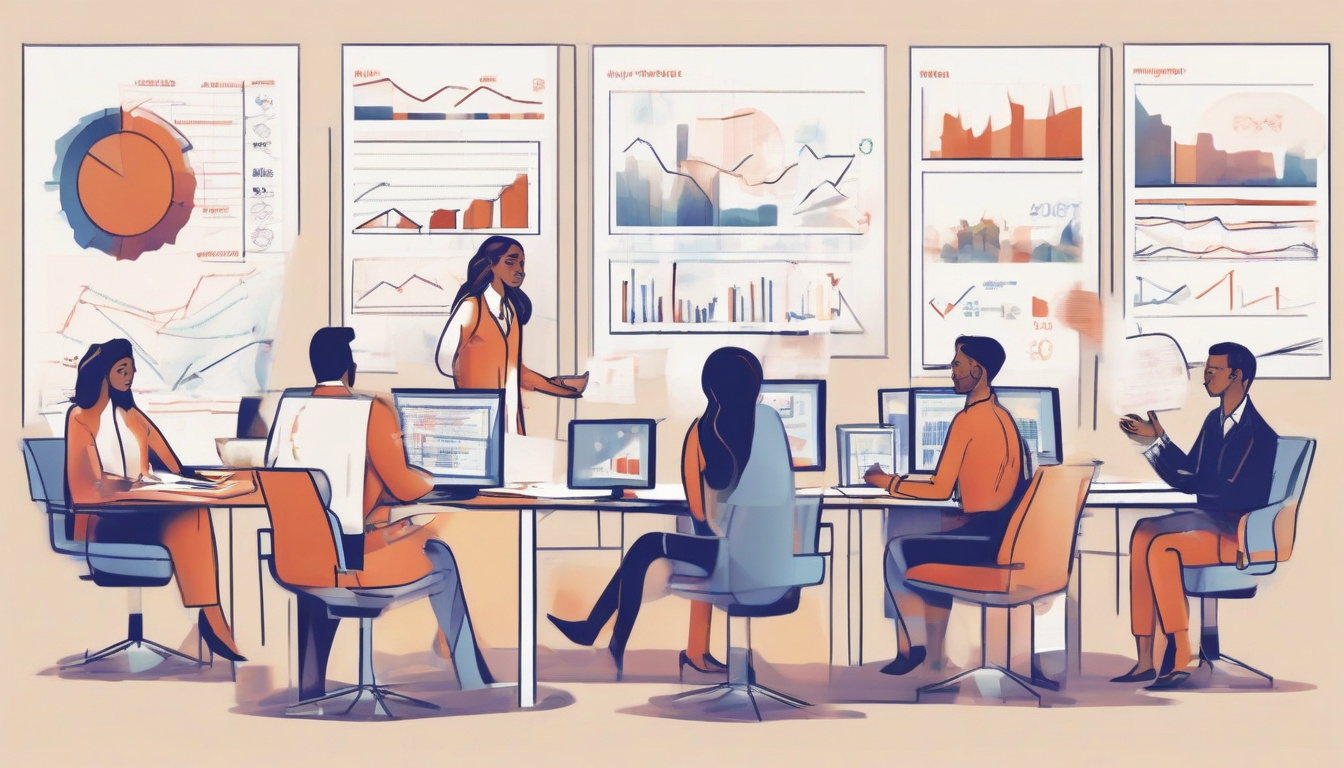Navigating the world of debt can be overwhelming, but understanding how debt elimination programs work can pave the way to financial freedom. Many individuals find themselves buried under a mountain of debt, with monthly payments consuming a significant portion of their income, leading to stress and a sense of hopelessness. Fortunately, debt elimination programs provide structured approaches that can help individuals regain control of their finances and work towards a debt-free life. In this ultimate guide, we will explore the ins and outs of debt elimination programs, the various types available, and how to choose one that fits your unique financial situation. We will also outline actionable steps to implement your chosen program effectively and discuss how to maintain financial health after achieving debt elimination. By the end of this guide, you’ll have the knowledge and tools you need to break free from the chains of debt and embrace a financially secure future.

Key Takeaways
- Debt elimination programs can provide a structured approach to managing and reducing debt.
- There are several types of debt elimination programs, including debt consolidation and settlement options.
- Choosing the right debt elimination program requires careful consideration of your financial situation and goals.
- Implementing a debt elimination program involves specific steps, such as budgeting and prioritizing payments.
- Maintaining financial freedom post-debt elimination involves ongoing financial education and responsible spending habits.
Understanding Debt Elimination Programs
Debt elimination programs are structured initiatives designed to help individuals manage and ultimately eliminate their debt. These programs can vary significantly in their approach, structure, and effectiveness. Understanding how they work is essential for anyone looking to regain control over their financial situation. Typically, debt elimination programs may include debt consolidation, debt settlement, and credit counseling services.
In a debt consolidation program, borrowers combine multiple debts into a single loan with a lower interest rate, making it easier to manage payments. Debt settlement involves negotiating with creditors to reduce the total amount owed, often leading to substantial savings. On the other hand, credit counseling services provide guidance on budgeting and money management strategies, empowering borrowers to make informed decisions.
Each program has its advantages and drawbacks and is suitable for different financial situations. For instance, debt consolidation may lower monthly payments but might extend the repayment period. Debt settlement can negatively impact credit scores, while credit counseling does not affect credit ratings but requires diligent adherence to budget plans.
Ultimately, selecting the right debt elimination program involves careful consideration of one’s financial goals, the type of debt owed, and personal circumstances. By thoroughly researching available options and understanding the implications of each program, individuals can take significant strides toward financial freedom.
Types of Debt Elimination Programs
### Types of Debt Elimination Programs
Debt elimination programs can take various forms, tailored to meet the specific needs of consumers grappling with financial challenges. Understanding the different types is crucial for individuals looking to regain control over their finances. Here, we’ll explore some of the most common debt elimination programs available today:
####
1. Debt Settlement Programs
Debt settlement programs involve negotiating with creditors to reduce the total amount owed. A debt settlement company typically pools your monthly payments into a designated account while negotiating with creditors to accept a lump-sum payment that’s less than the full balance. This can lead to significant savings, but it often comes with tax implications and can negatively affect your credit score.
####
2. Credit Counseling
Credit counseling services offer professional guidance to help consumers manage their debt more effectively. These programs often include budgeting help, financial education, and personalized debt management plans (DMPs), where clients make a single monthly payment to the counseling agency, which then distributes the funds to creditors. This approach can help lower interest rates and stop late fees, providing a structured path to debt elimination.
####
3. Debt Management Plans (DMPs)
As a subset of credit counseling, DMPs allow consumers to consolidate their debts without taking out a new loan. This program typically involves working with a credit counseling agency to create a plan that minimizes interest rates and consolidates payments into one affordable monthly payment. These plans can be particularly beneficial for individuals with unsecured debts such as credit cards.
####
4. Bankruptcy
While often seen as a last resort, declaring bankruptcy can provide a fresh start by eliminating many types of debt, including credit card debt, medical bills, and certain personal loans. There are different types of bankruptcy—Chapter 7, which discharges unsecured debt, and Chapter 13, which involves a repayment plan. It’s vital to understand the long-term impact of bankruptcy on one’s credit and financial future.
####
5. Debt Consolidation Loans
Debt consolidation loans combine multiple debts into one loan with a potentially lower interest rate. Borrowers use this loan to pay off existing debts, simplifying repayments to a single lender. This type of program can help streamline payment processes and, when done correctly, can reduce the total interest paid over time.
####
6. Income-Driven Repayment Plans (for student loans)
For those struggling with student loan debt, income-driven repayment plans adjust monthly payments based on income and family size. While primarily designed for federal student loans, these plans can alleviate financial strain and, in some cases, even lead to forgiveness after a set number of years of qualifying payments.
####
7. Consumer Debt Programs
These programs focus on negotiating a way out of debt while establishing better financial habits. They may involve educational workshops, budgeting support, and personalized plans aimed at long-term financial wellness. Consumer debt programs aim to empower individuals to take charge of their finances while eliminating debt.
In summary, each of these debt elimination programs has its unique approach and benefits, suited to different financial situations. It’s essential for individuals to assess their personal circumstances, consider the pros and cons of each program, and seek professional advice when necessary to decide the most effective path to debt elimination.
‘The only way to get ahead is to get started.’ – Mark Twain

How to Choose the Right Debt Elimination Program for You
Choosing the right debt elimination program is a critical step toward achieving financial freedom. With numerous options available, each offering different approaches to debt management, it’s essential to evaluate several factors to find the program that best suits your needs. Start by understanding your financial situation: assess your total debt amount, interest rates, and monthly payments. Next, consider the program types, such as debt settlement, consolidation, or credit counseling, and determine which aligns with your goals. Research the credibility of the programs by checking reviews and ratings from past participants and reputable organizations. Look for transparent fee structures that don’t include hidden costs and ensure they provide personalized plans tailored to your financial circumstances. It’s also wise to consult with a financial advisor who can offer professional insights and help you weigh the pros and cons of each program. Lastly, make sure to ask about the program’s timeline and the support offered during your journey to becoming debt-free.
Steps to Implementing a Debt Elimination Program
Implementing a debt elimination program is a strategic approach to regaining control over your finances and achieving financial freedom. Here are the essential steps to successfully establish and follow through with your debt elimination plan:
### Step 1: Assess Your Current Financial Situation
Begin by taking a comprehensive inventory of your financial status. List all debts, including credit card balances, personal loans, and any other liabilities, along with their interest rates and monthly payments. This will give you a clear picture of how much you owe and what you’re up against.
### Step 2: Create a Budget
Develop a realistic budget that outlines your income and expenses. Identify areas where you can cut back, allowing more money to be directed toward debt repayment. A budget not only helps you prioritize spending but also keeps your financial goals front and center.
### Step 3: Set a Target Debt Amount
Choose a specific amount of debt to focus on eliminating first. This could be the smallest debt (snowball method) or the one with the highest interest rate (avalanche method). Having a targeted approach generates quick wins, motivating you to continue.
### Step 4: Find Extra Income Opportunities
Look for ways to earn extra money that can be funneled directly into your debt elimination program. This might involve side jobs, freelance work, or even selling unused items around the house. Every little bit helps!
### Step 5: Establish an Emergency Fund
While focusing on debt elimination, it’s crucial to have a small emergency fund in place. This protects you from taking on more debt due to unforeseen expenses. Aim for a few hundred to a thousand dollars as a safety net.
### Step 6: Stay Committed and Monitor Progress
Regularly review your budget and debt elimination plan to track your progress and make adjustments as necessary. Celebrating small milestones can significantly impact your motivation and commitment.
### Step 7: Seek Professional Help if Needed
If you find yourself overwhelmed or unable to keep up with payments, consider reaching out to a financial advisor or credit counselor. They can offer valuable guidance tailored to your specific circumstances, helping you navigate challenges within your debt elimination program.

Maintaining Financial Freedom After Debt Elimination
Achieving financial freedom after completing a debt elimination program is a pivotal moment that deserves careful planning and strategy to ensure the hard work pays off long-term. First and foremost, it’s crucial to establish a realistic budget that reflects your new financial circumstances. This involves tracking income and expenses meticulously, allowing you to allocate funds wisely while also saving for emergencies and future goals.
Additionally, rebuilding and maintaining a good credit score can further empower your financial decisions. This might include using credit responsibly, making timely payments, and reducing credit utilization rates. It’s advisable to keep old credit accounts open, as they contribute positively to your credit history.
Another important aspect of sustaining financial freedom is diversifying your income streams. Exploring side jobs or investments can provide extra cash flow, making it easier to stick to your budget and enhancing your savings potential. Moreover, consider establishing an emergency fund with at least 3-6 months’ worth of living expenses. This not only serves as a financial cushion but also minimizes the likelihood of falling back into debt due to unexpected expenses.
Finally, continuously educating yourself about personal finance can empower better financial decision-making in the future. Staying informed about interest rates, investment opportunities, and even inflation trends will help you adapt to the changing economic landscape. Ultimately, maintaining financial freedom is about making informed choices, staying disciplined, and setting clear financial goals for the future.
Frequently Asked Questions
What is a debt elimination program?
A debt elimination program is a structured plan designed to help individuals reduce, manage, and ultimately eliminate their debts, often through strategies such as debt consolidation, negotiation, or financial counseling.
What are the different types of debt elimination programs?
The main types of debt elimination programs include debt management plans, debt consolidation loans, debt settlement services, and credit counseling. Each program has unique approaches and benefits, depending on individual circumstances.
How do I choose the right debt elimination program for my situation?
Choosing the right program involves assessing your total debt, your income, and your financial goals. It’s important to research each program’s fees, terms, and effectiveness, and consider consulting with a financial advisor for personalized advice.
What steps are involved in implementing a debt elimination program?
Implementing a debt elimination program typically involves analyzing your current financial situation, selecting the right program, setting up a real repayment plan, and sticking to a budget to track your progress.
How can I maintain financial freedom after completing a debt elimination program?
To maintain financial freedom, focus on creating a sustainable budget, building an emergency fund, and avoiding high-interest debt. Continually educating yourself on personal finance can also help you maintain your financial independence.
